-
Posts
565 -
Joined
-
Last visited
Content Type
Forums
Detector Prospector Home
Detector Database
Downloads
Posts posted by PimentoUK
-
-
This idea of 'bedding in' new cells is nothing new. It was widely done in the 1980's with NiCad's. Early methods of creating 'better' battery packs involved grading the cells so that the best ones ( highest capacity, usually ) could be sold at a premium.
Then cell matching evolved from that, so a 6-cell pack made from 6 closely-matched cells would get the best out of them, as they would all dump simultaneously, rather than one weak cell compromising the others.
To do all this testing, it was necessary to charge and discharge the cells several times. This lead to testers performing a couple of slower full charge/discharge cycles first, the idea being that plating the metals on the electrodes was better than the industrial manufacturing processes that create the cell initially. Lower internal resistance ('more punch' ) was the main claimed benefit, as these car packs were drained at average currents of 15 Amps for a 5 minute race. I remember some of the serious racers using these 'Keil Pushed Cells' (attached), which were pre-conditioned, matched, and selected to be above-average ... at a hefty price premium. -
"I am going to go slow in charging my detector for the first time."
Do you have much control over this ? I assume you're not planning on removing the cell from the detector in order to do this 'pre-use processing' ?
"Also, storage should be around 40% for long term"
What's not ideal for cell longevity is leaving them charged at the full 4.2 Volts. Even having them at 4.0 volts makes a significantly beneficial difference. You just have to avoid the cell being too flat, as undercharged is also bad for the cell. Once again, you have no direct control over how charged the cell is when it's inside the machine. I'm not familiar with this detector, but some combination of on-screen battery-strength bargraph, and switching it on for a couple of hours to take the peak voltage away, should be adequate for over-winter storage.
Remember the R/C folks hammer the hell out of their batteries, and they also demand the best performance from them. ( I used to race R/C cars - taking hot battery packs out the car and chucking them in a bucket of cold water, then pretty soon after fast-charging them again, is the kind of abuse they got .. ). Us detectorists are not so demanding ... plus there's always the USB port to plug a 'power-bank' etc into, if you start losing performance.
-
What you can't see is that the stool in the background now has only 3 legs ....
-
I like the offset ears on my Fisher F75 "5 inch" round coil.
(1) When the coil is folded flat against the shaft for transportation, it's shorter with off-centre ears.
(2) I like to see the centre of the coil, it helps with pinpointing. I have a circular 15mm black label on the dead-centre of my white Fisher coil to further assist with pinpoint accuracy.
(3) We detect agricultural land a lot here in the U.K. When detecting cereal crop stubble, I fit the coil the reverse way round. This way, the shaft fouls the stubble much less. The coil can be swept between rows of stubble, for example.So I'm fine with N-M's ears. I just think they should have made the coil 5 inch, not 6 inch across, and I'm not too fond of open spider designs on small coils either. But that can be largely solved with a 'solid' coil cover fitted.
-
"Now you have 2 handles"
Were you thinking of using the lower 'handle' , then, for weight-balance reasons ?
I use the 'pinpoint' button a fair bit, so not having the control-box immediately above the handle would be annoying for me. -
I think the fully-charged voltage of 17.4V indicates that the battery is a 12-cell pack. Trickle-charged NiMH's typically settle at 1.40V per cell, a tiny bit more sometimes. 12 cells at 1.45V each would give the 17.4V observed.
It also seems slightly more likely from a packaging viewpoint - 12 cells is four sticks of 3 cells, or three sticks of 4 cells. -
I have to disagree a little with you, Steve.
The fact that multifreq machines allow for superior handling of the ground signal ( with improved target ID, greater depth and good salt-beach performance being the benefits ) is the PRIMARY purpose of MF. The ability to give a better response to a wider range of targets from 'low conductivity' to 'high conductivity' is very much a secondary feature. And it's not a feature at all unless the engineers specifically designed it into the machine, either.
I do think that part of the 'intelligent' aspect of ML's Multi-IQ is the fact that it is still looking for 'low-conductor' targets even when you're using a 'higher-conductor' mode like "Park1", for example. Whereas older machines like the Fisher CZ's and ML Sovereign's are only somewhat tuned to their two frequencies, and definitely favour the low one ( 5kHz and 3.125kHz respectively ) -
I think a more marketable detector is the digital/analogue hybrid, a good example of which is the XP GoldMaxxPower. This uses a micro to do most of the processing and audio generation, but does it in an analogue style. The control-box is largely analogue, rotary pots for GB, disc, volume.
-
One seemingly smart solution would be for the Vanquish to have battery-charging electronics built into it. Perhaps something similar to the XP GoldMaxPower - which used a spare pin on the coil connector ( and the existing ground pin ) for charging. The charger power-pack had a trickle-charge current limited output, for a 14 hour charge. The additional electronics inside the detector were minimal .. from memory, a diode ( to prevent discharge from the connector ) a resettable fuse type device ( polyfuse ) and a resistor to limit the current a bit.
The problem with this arrangement, is it allows you to charge regular dry batteries inadvertently, which is not a good thing.You are right about the tedium of removing four AA's to charge them every time. I have a Fisher F75 that I run on AA NiMH's. Thankfully, it's amazingly frugal, 30+ hours runtime is normal, so it's not neccessary to charge after every session, so I could live with the charging inconvenience.
But I did devise a scheme where I could charge the NiMH's in-situ, using the headphone socket. Trouble is, I also came up with a scheme where the detector couldn't be accidentally powered up ( the rotary switch is easily disturbed ) unless headphones were plugged into the socket. I never actually made either mod.
( a slip of thin card inserted over one of the +ve battery pips sorts out the unwanted turn-on issue ... simple )
-
Guys ... he's not wanting it to collapse small for transportation, he's wanting it to be short WHEN HE IS USING IT. If you insert the lower rod up to the top locating hole on the central section, it's about 1 metre total ( I haven't checked on my one ) and he wants 50 - 70 cm. For Scuba-dive use, maybe?
The lower rod can be directly inserted into the top shaft, that will get the length into the 90cm zone. He could make a new pip hole in the lower rod, that would let it be inserted a few cm further inside the upper shaft, the limit being where the control-box fits on. But he's going to need a shorter lower rod if he wants to get 70cm or less. Assuming he can buy a Minelab Equinox legally in his country, he can thus buy a new Minelab lower rod, which he can cut down how he likes to get the 70cm or shorter total.Minelab distributor in Turkey:
https://www.minelab.com/usa/where-to-buy?search=dealer&country=206
-
This idea has been on my mind since I first got my Equinox. But recently I've investigated the calibration of the target-ID scale:
That has allowed me to make a more detailed post.
The current target ID scale has its mid-range '20'/'21' calibrated for a 6 kHz target. This seems reasonable for modes like Park1/Field1 , which place their emphasis on the 7.8 kHz operating frequency. The scaling of the rest of the numbers encompasses a very broad range, from targets way beyond US silver Dollars at the top end, to tiny nuggets at the bottom end. See the attached table detailing the current ID range.
I always felt the range was too compressed - targets reading above '30' ID are very rare for me, the machine seems more like it has a 30-point ID . But if you're the 'milled silver/copper coin hunter' , it's acceptable.However, in the sparkier Park2/Field2 modes, the machine is clearly emphasising the 18.2 kHz operating frequency, great for European farmland hunting, looking for tiny ancient coins and other lower-conductor artefacts. But I think the detector needs the option of a recalibrated ID scale to match these low-conductor hunting modes. Centre-scale should be a target matching the 18.2 kHz, such as a US 5 cent 'nickel' coin ( a 16.6 kHz target ). The low ID range can be stretched a bit to give more resolution, and extended a bit to go 'below 1'. The high-conductor end of the scale can sacrifice a lot, and still ID many real common targets.
I propose a scale with a US 5 cent coin as ID = '20'. Scaling of individual ID steps is for a frequency ratio of 1 : 1.1067 ,so that 4 ID steps represents a 1 : 1.5 change in target frequency. To see how this fills the ID range, see the attached table.
I think the user should have the option of 'dual-scaling' the TID readout. If Park1/Field1/4kHz/5kHz/10kHz is selected, keep the existing ID scale. If Park2/Field2/15kHz/20kHz/40kHz/goldfield is selected, the nickel-centred 'Low-conductor' scale is used.
[I've neglected Beach-modes, as I'm not familiar enough with them to decide]This choice of 'Standard ID' or 'Dual-scale ID' could be implemented using the (under-utilised) 'coil disconnected' mode. The machine would then remember how it was configured when subsequently operated normally. [ See this post for 'coil disconnected' mode thoughts:
An additional idea : The '88' TID readout can clearly indicate a value above 40, so it's possible to still ID large milled coins in the 'low-conductor' ID mode. The only real issue relates to the 'notch' , where '40' would notch '40 and above', and the feature allowing you to notch a particular target after you've swept over it would need a re-think.
-
"But how can we use this calibration table to more accurately ID targets?"
It's no use for that.
It has academic interest, and it removes the mystery of 'what the numbers mean'.
It allows you to in turn calibrate the ID scale of any other 'ID' detectors you have.
-
Many of you will be aware that the 'Target ID' number given by a detector is related to the 'Target frequency'. 'High frequency' targets read low-down on the ID scale, typically because they are small, thin, or made of a metal that's a poor electrical conductor. Conversely, 'low frequency' targets tend to be physically larger, and more likely to be composed of better conducting metals.
By careful measurement, it's possible to calibrate the ID scale of a given detector. I've done this for my Fisher F75 previously, it has a wide non-ferrous ID scale, from 16 -> 99, so it can give quite precise target freq. values.
I finally got round to properly working out the calibration of the Equinox 00 -> 40 scale. I have quite a varied selection of test targets that I've used for this calibration. Some of this as a result of work done on the Geotech1 forum, where both PI and VLF's were used for tests. The real physical targets include squares cut from aluminium drinks cans, coins, precisely-made copper rings. The best target is a 'synthetic' one: a coil of wire, with a selected resistor as a load. Knowing the inductance and resistance lets you calculate the time-constant / frequency.Having taken a mountain of readings, it became apparent what Minelab have devised to create the scaling of the Equinox. It's actually very nicely done, and probably only possible as a result of using a high performance microprocessor. Each ID number step represents a fixed frequency multiple change from the previous number. This applies over the entire range from '02' up to '39' , covering a range from 80 kHz to 0.5 kHz. If you plot 'Target frequency' against 'ID number' on log/lin graph paper, you get a perfect straight-line graph.
Here is some nerdy maths for you:
The ratio from one step to the next is 1 : 1.1472 , so every 8 ID numbers represents a target freq change of 1:3 . An increasing ID number means a lower target frequency, (and a larger target time-constant).Target time-constant and target frequency are related by:
2 * pi * Freq * time_constant = 1
which may be useful to PI users, nugget-hunters.
The designers obviously have to choose some particular ID value as their 'reference', and every other ID relates to this. It appears Minelabs engineers have chosen 'centre-scale' to roughly match the 7.8kHz operating frequency ( which dominates the Park1 / Field1 modes). A 7.8kHz target would actually read mid-way between '18' and '19', so technically they were 2 digits out, as it would ideally be 20/21.
( The numbers in the table are calculated. I chose ID ='20' as being a 25 microsecond target, and derived my figured from that.)
A few things to note:
This ID calibration is done for 'Park1' mode; 'Field1' should be the same. If you're using modes with a higher freq bias ( eg. Park2/Field2 ), the numbers can differ by a point, as you will have no doubt observed.The frequencies shown are for the middle of that ID value range. So for example, TID = '16' actually encompasses targets from 10.3 kHz -> 11.8 kHz
Frequencies for ID values over '33' are estimated mathematically. I didn't have any useful test targets reading that high up the scale to verify the numbers.
To get a true measurement of a test target, you need to measure it at a test frequency close to that of the target. If you use a different measurement frequency, particularly one higher than the target, you can get errors due to 'skin effect' , where not all of the sample's metal is being measured. So, for example a US silver Dollar has a target freq of something like 0.85 kHz. But measure it with a typical 10 kHz detector, it looks like a 1.2 kHz target. -
Buy an additional Minelab carbon lower rod. Cut down the length, make a new hole in it for the metal spring-pip, and fit it directly into the upper rod. 60cm total length should be easy to attain.
-
As he's not replied with his Country location, I'll point out that the coins are Portuguese.
-
Settings issue? I got the impression he's asking:
"Why could I find plenty of targets before, but since the tides have made this ripple pattern, there are no targets to be found?"
I've never been beach detecting, but presumably if this ripple is caused by lots of deposited sand, then many targets have simply gone out of range?
There is no scale on the drawing, these ripples could be 60 centimetres high ( 24 inches for those Imperial users ) -
I think he is saying:
"The seabed is not flat, the tides/waves have made an undulating ripple pattern in the sand, like in this drawing.
What has caused this sand pattern, and is this why I cannot find any targets, now ? " -
What complicates the business of Ground Balance on multi-freq machines is the obvious: they have two, three, four operating frequencies. Hence multiple ground balance figures.
So on the Eqx: Park1 and Park2 both use the same transmitted selection of freqs, but the 2 modes will GB differently. It seems clear that as well as giving more emphasis to certain freqs in normal operating mode, the GB value also has a bias towards that same frequency.
( In my opinion, Park1 will have its GB dominated by the 7.8kHz freq; Park2 will be dominated by the 18.2kHz freq. )
Strong iron/magnetite etc ground will likely give similar GB values regardless of which mode/freq profile is being used, a near-zero phase angle is still near-zero at a different frequency.
-
Basically, yes, you've interpreted the relationship correctly.
But it's only valid if you're lowering the coil to the ground, if you're lowering it from 20cm to 10cm, you're not doing it correctly.
It's a good question, because it then brings up the question "What is the audio signal indicating in ground balance mode??"
It's not simply indicating ground strength. If this were the case, lowering the coil to the ground would ALWAYS give an audio response. II guess it's pretty obvious that if the coil is 2cm above the ground, it's going to have strong ground pickup, and if it's 40cm above the ground, the pickup will be very much lower.
What's not so clear, is that the phase angle caused by the ground also changes as the coil is raised, and not in a particularly intuitive way. It actually changes towards 'Salt' as the coil is raised. So lowering the coil from, say, 15cm height down to a low level will cause an increase in ground strength, and a change in phase lag from, perhaps 25 degrees to 10 degrees.
If you're performing the 'pumping' procedure, ( groundgrab, fastgrab etc ) the micro brains can continuously read this signal, and work out that at the strongest point, that's the ground-balance value it has to calibrate to. But it can't use that value alone , it also needs to know what signal the coil gives when it's in free air, a long way from metal/ground/water. How it works that out, when you only raise the coil to 15/20cm high, I dunno.
-
I believe that ground with strong magnetite will still have electrically conductive minerals in it, it's just that the magnetite dominates the response to a detector, and whether it's also medium mineralised or hardly any minerals, or wet, or bone dry, has very little effect on the phase angle, it's going to be pretty close to Zero degrees, which would nominally be '00' on the Eqx, and '90' on the Fisher F75.
[[ mathematically, it's Vector addition:
There is a 'Zero Degrees' signal caused by the microscopic iron / rust / magnetite etc.
And a '90 Degrees' signal caused by minerals making up the ground, that conduct electricity, particularly when wet.
These two add together like vectors. The total strength would be calculated using the Pythagoras equation:
(Total strength)^2 = (Zero degrees)^2 + (90 degrees)^2
And the resulting Phase angle = arctan (90 degrees / Zero degrees )
The phase angle is the figure that is manipulated heavily to end up presented as 'Ground Balance', whether it goes 0 >99, or 90 to 0 , or anything else. ]]
-
Minelab chose the Equinox GB numbers to go the opposite direction to what Fisher typically used on their range, eg. F75.
So 00 is strong magnetite -> 90's for saltwater.
I think the owners manual states this, if you download it and take a look.
( it's not that clear to be honest. And the fact that in 'beach' modes, the default GB value is '00' doesn't help matters ...)
-
To follow up:
Steve and I have conversed via PM about this.
To summarise:
The 'subscript' and 'superscript' options are no longer on the top menu. While there are keyboard shortcuts for italic ( 'ctrl+i' ), underline ( 'ctrl+u' ), bold ( 'ctrl+b' ) , there are no such shortcuts for subscript/superscript, so that workaround is not an option.
The 'Source' button is still present on the top menu. It's just my PC that doesn't show it, regardless of level of zoom in/out. Again, no keyboard shortcut exists for this function, because it's an editor plug-in, rather than a basic function.
-
100 US Dollars for an almost fully working pod ? It's got to be worth over 200 Dollars, surely?
-
Better use could be made of the situation where the machine is powered up with the coil disconnected.
It's good that the battery strength bar-graph functions in this 'mode' , I frequently check on state-of-charge, and appreciate not having to plug in the coil just to do this. So I think that the '88' display could usefully display more detailed battery info, such as the actual voltage: '40' == 4.0 Volts , or a 1->10 indicator.In addition, it would be convenient to see what firmware version is in the machine, and the 88 display could usefully provide this info in this 'no coil' mode. Possibly in a 'code' form, the lack of decimal point makes displaying 1.3.2 etc troublesome.


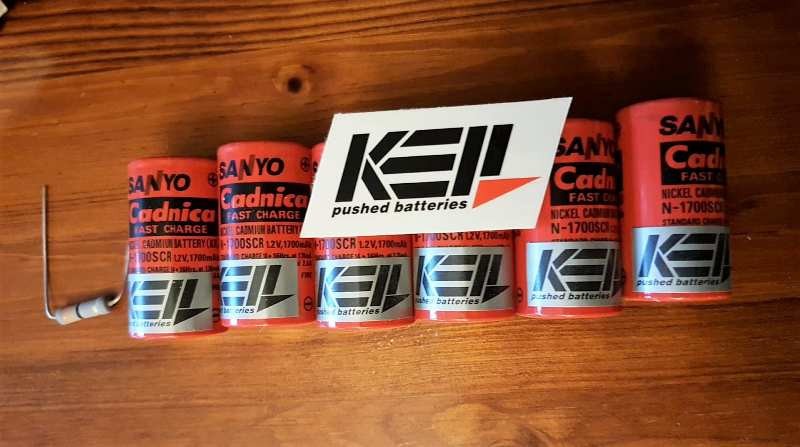
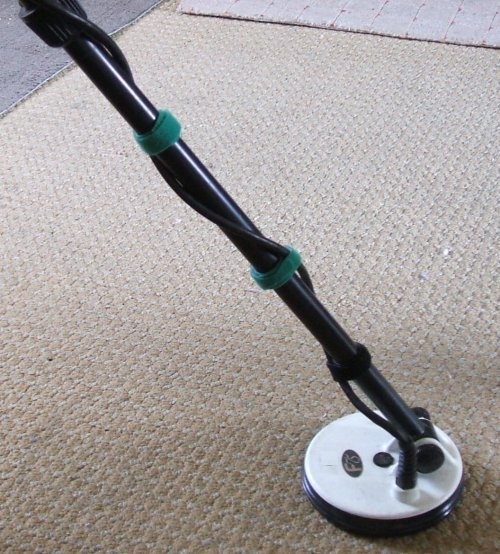
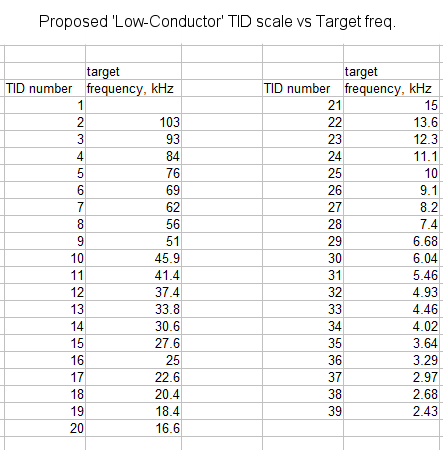
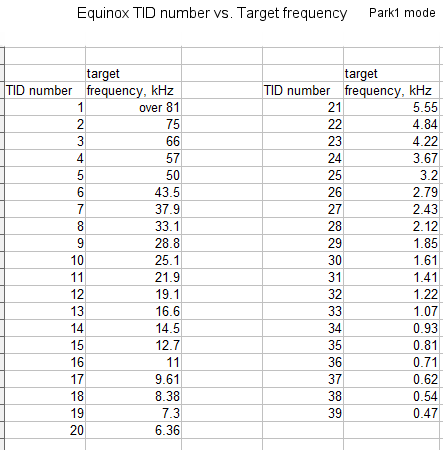
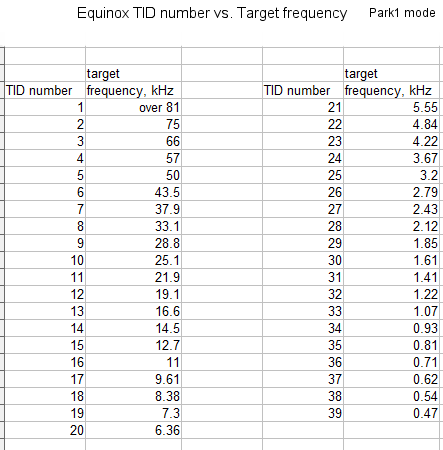
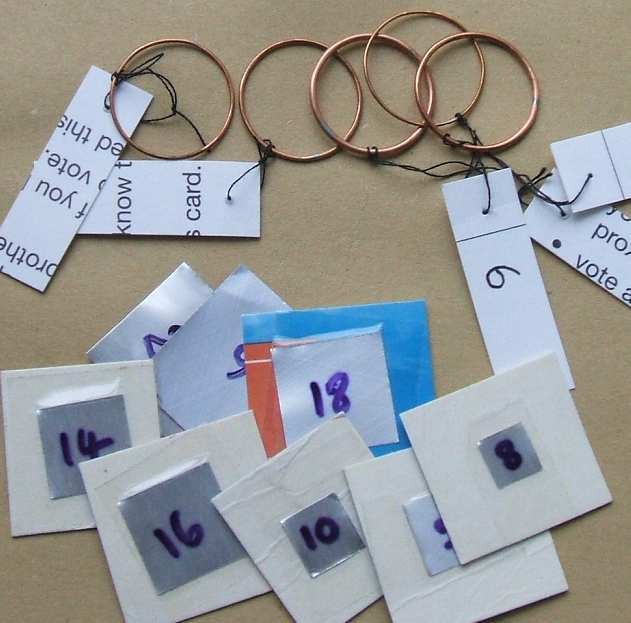
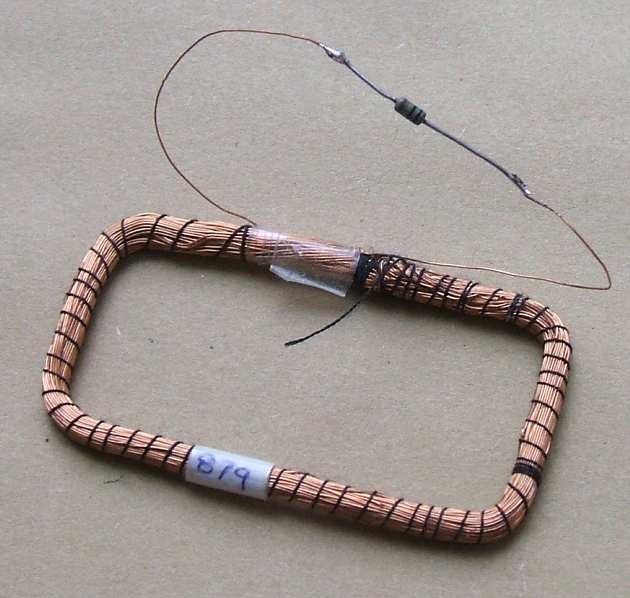
Do Lipo Batteries In Metal Detectors Last Longer If Broken In Slowly?
in Metal Detector Advice & Comparisons
Posted
If you want to extend longevity, a good method is to limit the maximum charging voltage to 4.1V or 4.0V. But how you do that when it's inside the detector is another matter.